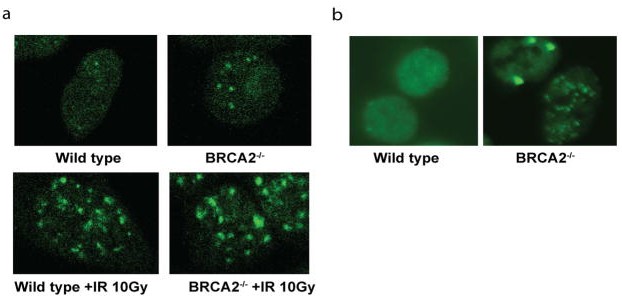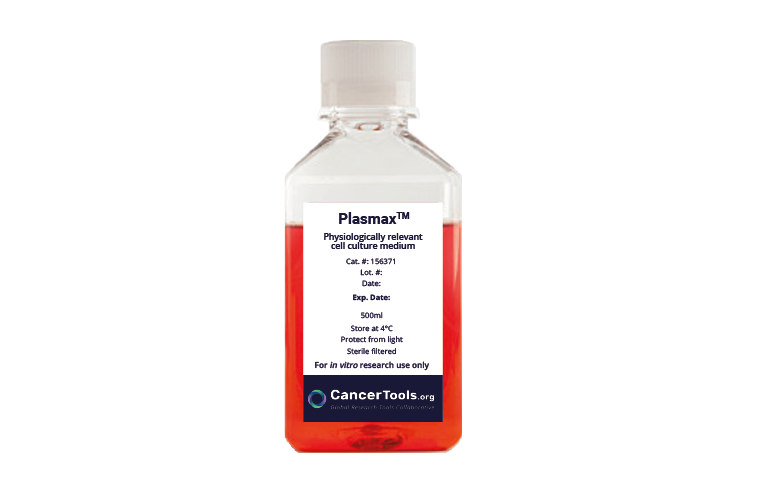Cat. #153531
HCT 116 BRCA2 -/- 46 Cell Line
Cat. #: 153531
Sub-type: Continuous
Unit size: 1x10^6 cells / vial
Organism: Human
Tissue: Colon
Disease: Cancer
Model: Knock-Out
£575.00
This fee is applicable only for non-profit organisations. If you are a for-profit organisation or a researcher working on commercially-sponsored academic research, you will need to contact our licensing team for a commercial use license.
Contributor
Inventor: Carlos Caldas
Institute: Cancer Research UK Cambridge Institute
Primary Citation: Xu et al. 2014. J Pathol. 234(3):386-97. PMID: 25043256
Tool Details
*FOR RESEARCH USE ONLY (for other uses, please contact the licensing team)
- Name: HCT 116 BRCA2 -/- 46 Cell Line
- Alternate name: HCT 116 BRCA2(-/-) clone 46; HCT 116 BRCA2(-/-)
- Cancer: Digestive / Gastrointestinal cancer
- Cancers detailed: Colorectal carcinoma
- Research fields: Cancer;Drug development;Genetics
- Tool sub type: Continuous
- Parental cell: HCT 116 cell line
- Clone: 46
- Organism: Human
- Tissue: Colon
- Disease: Cancer
- Model: Knock-Out
- Model description: Targeted disruption of human BRCA2 by homologous recombination
- Crispr: No
- Conditional: No
- Description: BRAC2 inherited mutations predispose carriers to various early onset cancers, including breast and ovarian. HCT116 BRCA2 -/- human colorectal carcinoma cell line was generated to study the role of BRCA2 in DNA repair, investigate the effects of BRCA2 mutations in a range of cancers, and identify additional functions of the BRCA2 gene. This includes the upregulation and effect of interferon-related genes (including APOBEC3F and APOBEC3G) when the BRAC2 gene is lost. This homozygous knockout cell line shows phenotypes consistent with previous reports, including loss of Rad51 foci in the presence of double-strand breaks, chromosomal rearrangements and elevated sensitivity to the DNA-damaging agents phleomycin and Parp1 inhibitors. This cell line has been used to show DNA damage occurs in BRCA2 knockout HCT116 cells even in the absence of exogenous genotoxic stress
- Application: Anticancer agents discovery and development; Cytotoxic agents' activity screening; Genome-wide microarray analysis; Over-expression of IFN-related genes; Ionizing radiation; Colony formation assay
- Production details: Targeted disruption of the human BRCA2 locus in HCT116 cells by homologous recombination. The gene targeting construct was generated by using a recombinant adeno-associated virus (rAAV) system. The deletion was confirmed by Southern Blot and Western Blot using antibodies against the C-terminus of the BRCA2 protein. This cell line was noted as clone 46 by the originating laboratory
- Biosafety level: 1
- Additional notes: Clone 42 was generated at the same time as clone 46 cited in Xu et al. 2014. J Pathol. 234(3):386-97. PMID: 25043256. The originating laboratory have advised they observed no difference in culture phenotype between clone 42 and clone 46.
- Recommended controls: HCT 116 parental line
- Cellosaurus id: CVCL_VP26
Target Details
- Target: BRCA2 (BReast CAncer gene 2)
- Target background: BRCA2 is a human tumor suppressor gene found in all humans. The primary role of its protein is in HR-mediated DNA damage repair
Applications
- Application: Anticancer agents discovery and development; Cytotoxic agents' activity screening; Genome-wide microarray analysis; Over-expression of IFN-related genes; Ionizing radiation; Colony formation assay
- Application notes: Points of Interest Transcriptional activity of the IFN-stimulated response element (ISRE) was increased in BRCA2 knockout cells, and the expression of BRCA2 greatly decreased IFN-α stimulated ISRE reporter activity. This suggests that BRCA2 directly represses the expression of IFN-related genes through the ISRE. It has been found that there are two pathways regulating IFN-related genes in BRCA2−/− cells; one is the endogenous DNA damage in BRCA2−/− cells, the other is the direct transcriptional repression by BRCA2. The colony forming capacity of BRCA2 knockout cells was significantly reduced in the presence of either IFN-β or IFN-γ. This indicates a potential for IFN as therapeutic options in cases of BRCA2 mutations. This cell line has been used to show DNA damage occurs in BRCA2 knockout HCT116 cells even in the absence of exogenous genotoxic stress. HCT116 BRCA2-/- cells were created through targeted disruption of human BRCA2 by homologous recombination and deletion was confirmed by Southern Blot and Western Blot using antibodies against the C-terminus of the BRCA2 protein. Concentration Vial has between 1-5 million cells as standard, however this may vary.
Handling
- Format: Frozen
- Volume: 1 ml
- Growth medium: McCoy's 5a medium modified, with 10% foetal bovine serum (FBS) and 2mM L-Glutamine
- Unit size: 1x10^6 cells / vial
- Shipping conditions: Dry ice
- Storage conditions: Liquid Nitrogen
- Subculture routine: Split sub-confluent cultures (70-80%) 1:3 to 1:6 i.e. seeding at 2-4x10⁴ cells/cm² using 0.05% trypsin/EDTA solution. Cells are cultured at 37°C, in 95% air and 5% CO₂, and passaged every 3 to 4 days.
- Mycoplasma free: Yes
- Characterisation tests: BRCA2 deletion was confirmed by Southern Blot and Western Blot using antibodies against the C-terminus of the BRCA2 protein
Related Tools
- Related tools: HCT 116 BRCA2 -/- 42 Cell Line
References
- Xu et al. 2014. J Pathol. 234(3):386-97. PMID: 25043256
- Issaeva et al. 2010. Cancer Res. 70(15):6268-76. PMID: 20631063



![HCT 116 BRCA2 -/- [42] Cell Line.](https://cancertools.org/wp-content/uploads/15262820-20original20-201-300x143.jpg 300w, https://cancertools.org/wp-content/uploads/15262820-20original20-201.jpg 622w)